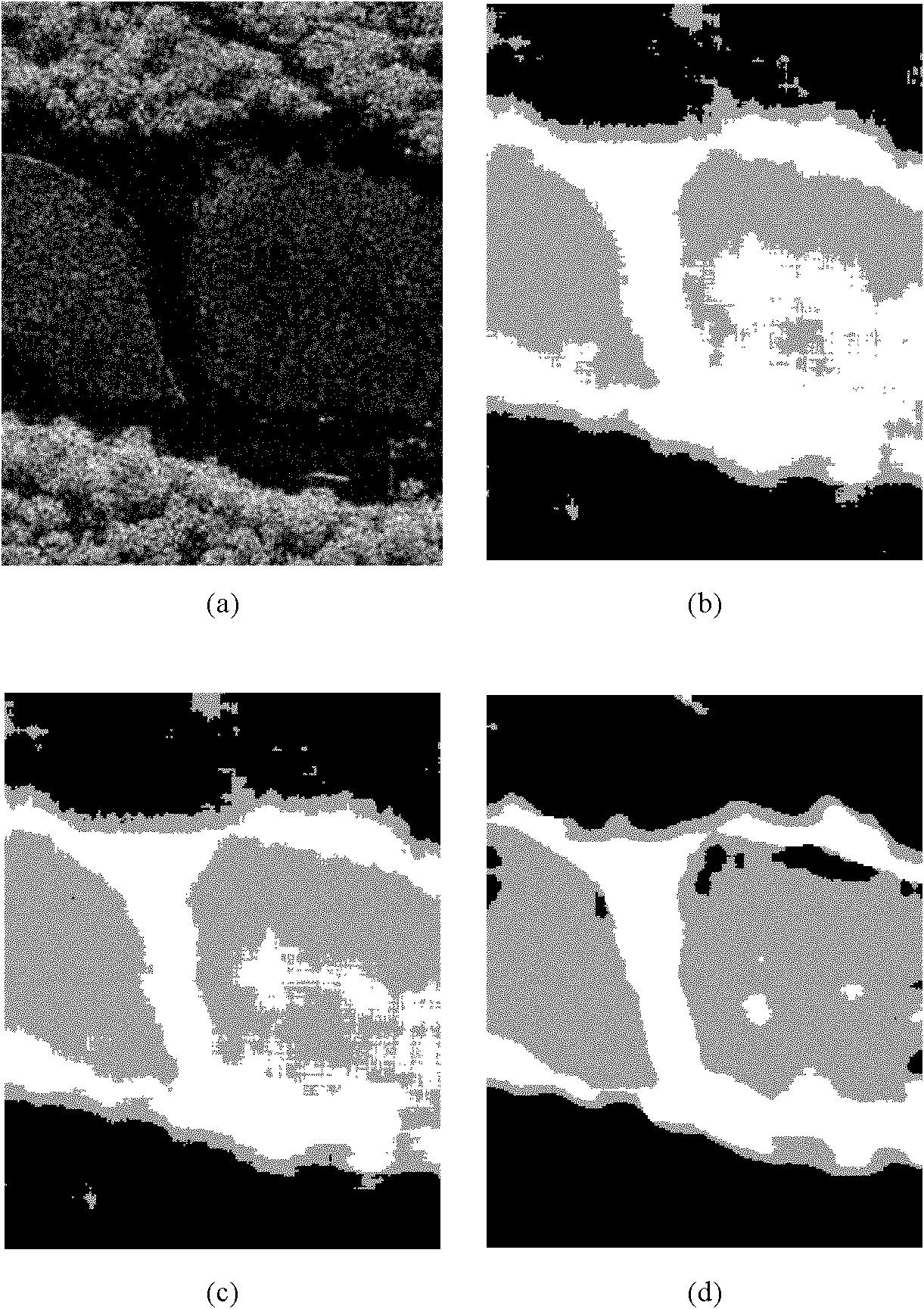SAR (Synthetic Aperture Radar) image segmentation method based on dictionary learning and sparse representation
A sparse representation and image segmentation technology, applied in the field of image processing, can solve the problems of poor SAR image segmentation effect and time-consuming, and achieve the effect of saving time and good image segmentation results
- Summary
- Abstract
- Description
- Claims
- Application Information
AI Technical Summary
Problems solved by technology
Method used
Image
Examples
Embodiment Construction
[0020] refer to figure 1 , the specific implementation process of the present invention is as follows:
[0021] Step 1. Input the image to be segmented, judge the main target and background to be recognized according to the image content, and determine the number of segmentation classes k, the value of k in this example is 2 and 3.
[0022] Step 2. Extract training samples and test samples from the image to be segmented.
[0023] Take each pixel in the image as the center to extract a window of size p×p to obtain a test sample set F with a size of m, where m is the total number of pixels in the image to be segmented, and then randomly select n samples from the test sample set, To get the training sample set Y, n is much smaller than m.
[0024] Step 3. Extract wavelet features from the training sample set Y.
[0025] SAR images have rich amplitude, phase, polarization, and texture information. In order to make each training sample more accurately marked, it is necessary to ...
PUM
 Login to View More
Login to View More Abstract
Description
Claims
Application Information
 Login to View More
Login to View More - R&D
- Intellectual Property
- Life Sciences
- Materials
- Tech Scout
- Unparalleled Data Quality
- Higher Quality Content
- 60% Fewer Hallucinations
Browse by: Latest US Patents, China's latest patents, Technical Efficacy Thesaurus, Application Domain, Technology Topic, Popular Technical Reports.
© 2025 PatSnap. All rights reserved.Legal|Privacy policy|Modern Slavery Act Transparency Statement|Sitemap|About US| Contact US: help@patsnap.com



